Alberta’s electricity grid still relies heavily on coal and coke, but that is going to change at a quick pace in the years ahead. The Climate Energy Plan proposed in 2015 by the Government of Alberta brought major changes to the province’s energy forecast, including a carbon tax and an ambitious coal-reduction plan. By 2030, one-third of Alberta’s coal generating capacity will be replaced by renewable energy sources — and solar energy is going to be part of this revolution.
Solar power is having one of its best moments yet, and there is seemingly no looking back. The Energy Information Administration expects renewable deployment to grow by 17% to 42 GW in 2024 and account for almost a quarter of electricity generation. In Alberta, the predictions seem as promising as the global outlook. The province is home to some of the sunniest cities in Canada, including Calgary and Edmonton, and its solar power industry increased 500 percent from 2015 to 2018.
Although the numbers sound impressive, there are still some unanswered questions regarding solar energy in Alberta. What is the solar energy news for households? What are the main solar power projects in Alberta? What to expect from solar energy in the province? If you want to learn more about it, read the full guide below.
The current solar energy initiatives in Alberta
Of course, every energy source has its pros and cons. Still, it’s quite impressive how the global solar power industry has been overcoming major obstacles such as production costs and above-average electricity rates, which makes it more affordable for both energy providers and consumers, both commercial and residential.
- More affordable solar electricity facilities
If some years ago you were told that solar electricity would be contracted by a lower cost than gas-powered electricity, you’d probably be suspicious. Believe it or not, that happened in February 2019 in Alberta.
Three new solar electricity facilities will be built in southeastern Alberta near Hays, Tilley and Jenner. The facilities opened in 2021, and will power 55 percent of the Government of Alberta’s electricity use in the years ahead.
According to the Canadian Solar Industries Association (CanSIA), the average contract pricing will be 3.6 cents per kilowatt-hour (kWh), which is less than the average historical wholesale power pool price from 2009 to 2019.
- Saddlebrook Solar and Storage
TC Energy has completed Phase One of the Saddlebrook Solar + Storage Project with the installation of 81 megawatts of solar generation using bifacial solar panels, generating enough electricity to power approximately 20,000 homes.
The Project’s focus is on Phase Two, the installation of a utility-scale energy storage facility with the ability to store up to 6.5 MW, 40-megawatt-hour in a battery system, anticipated to operate in conjunction with the Phase One solar-generating facility. Phase Two is expected to employ Lockheed Martin’s long-duration GridStar Flow Energy storage technology.
Both the solar-generating facility and the battery energy storage system will leverage inverter technology to convert the electricity produced by the solar panels and battery into alternating currents. The electricity produced will feed into the Alberta Interconnected Electric System (AIES) through a new substation constructed as part of Phase One of the project, within the project site, which is located entirely on TC Energy-owned land at the Saddlebrook Industrial Park in Aldersyde, Alberta.
- Sollair Solar Energy Project
The anticipated project schedule for the Sollair Solar Energy Project has an anticipated start construction date in October 2022, with a completed construction date in December 2022. General Land & Power Corporation is proposing to build a new substation as part of their Sollair Project. To connect their proposed substation to the grid. AltaLink is proposing upgrades to its transmission system in the area.
- Spring Coulee Solar Project
The Spring Coulee Solar Project is a 29.5-megawatt solar facility which is located on 183 acres of private land in Cardston County, Alberta, which is just west of Spring Coulee.
The project has an estimated 35,000 tonnes of greenhouse gas emissions annually to offset and generate enough electricity to power more than 5,000 Alberta homes. The total capital cost of the project is expected to exceed $50 million, bringing in an important source of direct and indirect economic activity to Cardston County and the communities nearby.
It was expected to be completed in one phase with commercial operations commencing in late 2022 and continuing through and over the next 30 years. It will tie directly into the local FortisAlberta electricity distribution grid and will benefit neighbouring businesses, residences, and farming operations with the use of clean, renewable power during daytime periods.
- Kinbrook Solar and Solar Krafte Utilities
Kinbrook Solar and Solar Krafte Utilities are proposing to construct the Rainier Solar Farm on 165 acres near Brooks, Alberta, southeast of Calgary. Kinbrook has entered into a lease agreement with the EID. Construction is slated to be completed in 2024.
The proposed development is listed among new proposals on an Alberta government major projects website and a description estimates the investment at $700 million. According to an AUC document, Solar Krafte has applied to amend a project that was approved in 2022, seeking to reduce power production to 360 MW from 400 MW.
How governmental incentives work
- Residential and Commercial Solar Program
The Residential and Commercial Solar Program by Energy Efficiency Alberta helps households and companies to cover the cost of investing in solar energy. The incentives range from $13,500 to $1 million depending on the size of your property. Check below the maximum amounts for each type of consumer who wants to install solar photovoltaic systems.
Residential and Commercial Solar Program: Category and maximum payable amount
| Residential | Less than $10,000, or 35 percent of eligible system costs |
| Commercial and institutional | Less than $1 million, or 35 percent of eligible system costs |
| Nonprofit and charities | Less than $1 million, or 35percent of eligible system costs |
- Municipal Climate Change Action Centre
Alongside the Residential and Commercial Solar Program, many municipalities in Alberta allow their residents to combine the Energy Efficiency Alberta program with municipal incentives. For example, The City of Edmonton is currently offering an additional incentive of 15 cents per watt toward the costs related to solar residential systems.
Check below some of the municipalities in Alberta that offer both provincial and municipal solar power incentives:
- Edmonton
- Brazeau County
- Town of Canmore
- Medicine Hat
- Town of Banff
According to Energy Efficiency Alberta, the main goal behind the incentives is to cut solar installations costs by 35 percent for residences, businesses and nonprofits, as well as to reduce greenhouse gas emissions in the province by about 0.5 tonnes.
What to expect from solar energy in Alberta
Alberta receives more hours of sunshine in the summer than Miami, Florida, according to CanSIA. In other words, this means Alberta has the potential to become one of the leading solar power spots in North America.
By combining governmental incentives with private investments, we can expect a bright (if you pardon the pun) future for solar power in Alberta in the years ahead. Of course, there are some challenges ahead, but the outlook seems quite positive, not only in the province but globally.
As reported by the Global Energy Market Report, solar energy is applied in residential and commercial and end-user are electricity generation, lighting, heating, and charging. The solar energy market size has grown exponentially in recent years. It will grow from $131.02 billion in 2023 to $169.81 billion in 2024 at a compound annual growth rate (CAGR) of 29.6%.











